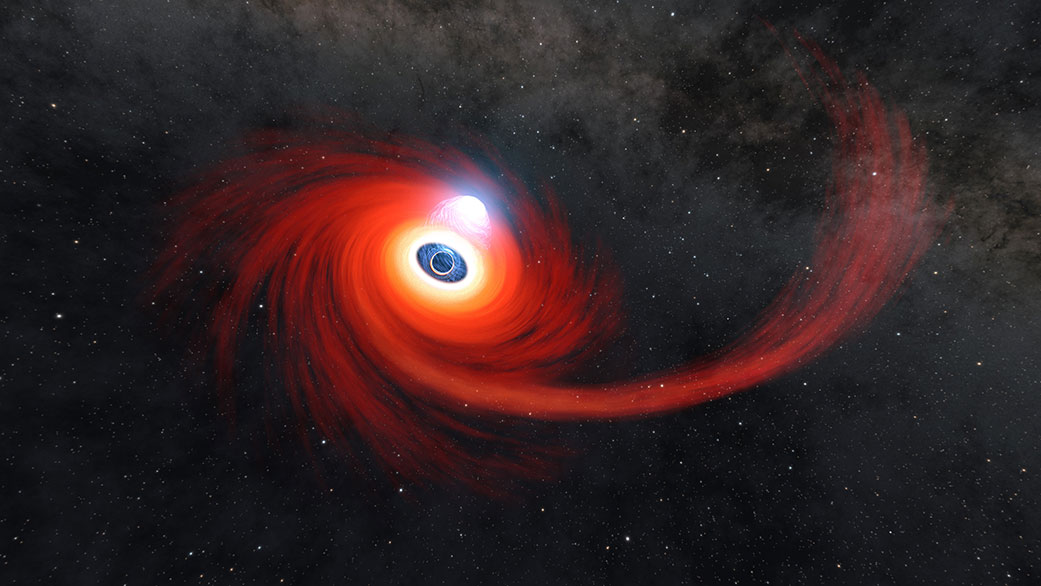Black holes are confounding objects that stretch physics to its limits. The most massive ones lurk in the centers of large galaxies like ours. They dominate the galactic center, and when a star gets too close, the black hole’s powerful gravitational force tears the star apart as they feed on it. Not even the most massive stars can resist.
But supermassive black holes (SMBHs) didn’t start out that massive. They attained their gargantuan mass by accreting material over vast spans of time and by merging with other black holes.
There are large voids in our understanding of how SMBHs grow and evolve, and one way astrophysicists fill those voids is by watching black holes as they consume stars.
Everyone knows we can’t directly observe black holes because not even light can escape them. But black holes exert near total control over their immediate surroundings, and as they bend matter near them to their will, that matter creates a spectacle of light across multiple wavelengths.
Astronomers have powerful tools to observe all that light. One of them is NASA’s NuSTAR, the Nuclear Spectroscopic Telescope Array. It’s a space telescope that was launched in 2012. It observes the x-rays from astrophysical sources like SMBHs.
NuSTAR played a critical role in a new study published in the Astrophysical Journal. Its title is “The Tidal Disruption Event AT2021ehb: Evidence of Relativistic Disk Reflection and Rapid Evolution of the Disk–Corona System.” The lead author is Yuhan Yao, a graduate student at Caltech.
When a black hole tears apart a star that gets too close, it’s called a tidal disruption event (TDE.) AT2021ehb is the name of a TDE that occurred at an SMBH in a galaxy about 250 million light-years from Earth. The SMBH is about 10 million times more massive than our Sun. It’s the fifth-closest example of a black hole destroying a star, and it gave astrophysicists an advantageous opportunity to study TDEs with NuSTAR and other telescopes.
Black holes are sometimes surrounded by vast disks of material called accretion disks. The disks are accumulations of gas that have formed over long periods of time, sometimes millennia. The disks can be billions of miles wide, and as they swirl toward the black hole, the gas heats up and can outshine entire galaxies. These are the black holes that astrophysicists can observe because, without the disk and its light, the black hole is just a black hole.
Even though the disk is bright, when the black hole tears apart a star and consumes it, the light from that TDE is still visible. The TDE can take as little as a few weeks or months from start to finish, which makes them viable targets for observation. Astrophysicists are especially interested in events that they can observe in their entirety for obvious reasons.
When the black hole in this TDE tore apart the doomed star, there was a delayed but dramatic rise in x-ray emissions. The x-rays are a signal that the TDE was creating super-heated material in a structure above the black hole called a corona. This is where NuSTAR comes in. When it comes to space telescopes, NuSTAR is best at observing x-rays in detail, and AT2021ehb’s proximity to us gave astrophysicists a remarkable opportunity to observe the corona and what happens to stellar material before a black hole totally devours it.
The region nearest the black hole is tightly-packed. This heats the gas to extreme temperatures, stripping electrons from atoms and creating plasma. The corona is made of this billion-degree plasma. The exact cause of its formation is still being studied, but it likely has something to do with the magnetic field lines in the accretion disk. The lines are predictable in the outer regions of the disk, but closer in, the field lines might tangle and break and reconnect. That activity could accelerate particles so much that they form the superheated corona and emit x-rays.
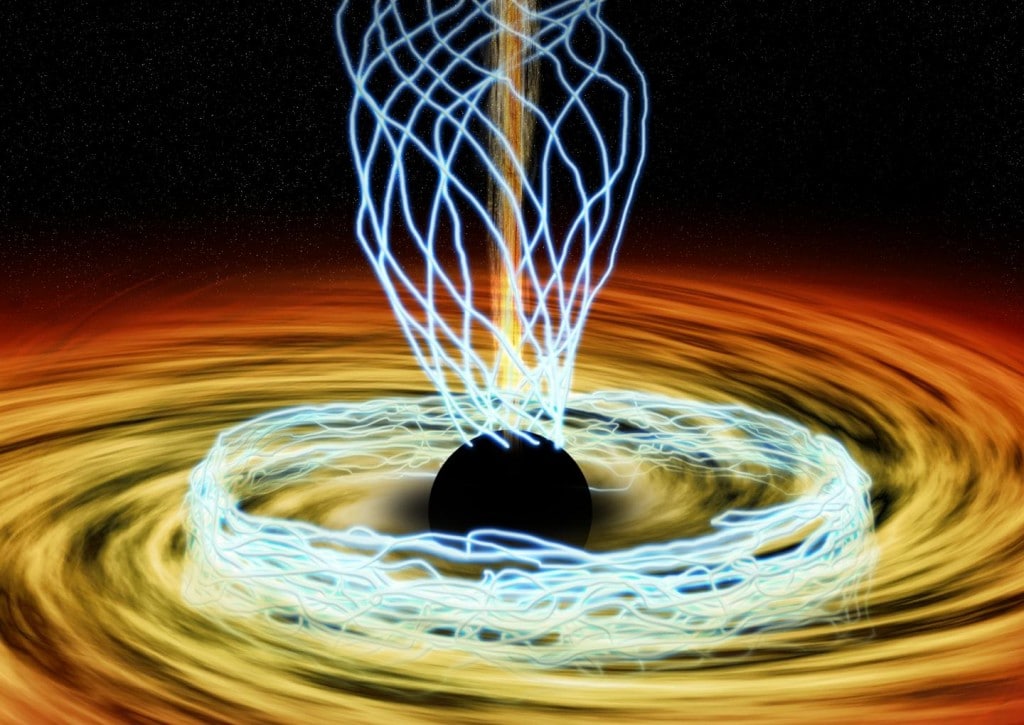
“Tidal disruption events are a sort of cosmic laboratory,” said study co-author Suvi Gezari, an astronomer at the Space Telescope Science Institute in Baltimore. “They’re our window into the real-time feeding of a massive black hole lurking in the center of a galaxy.”
A previous 2022 study in Nature Astronomy showed that when a black hole emits its jets, it carries material from the corona with them. “It sounds logical, but there has been a debate for twenty years about whether the corona and the jet were simply the same thing,” said astrophysicist Mariano Méndez, who was the lead author of that study. “Now we see that they arise one after the other and that the jet follows from the corona.”
But that study wasn’t based on observations of a TDE. This study took our understanding even further, showing the link between a star that got too close to a black hole and the formation of the corona, the precursor to a black hole’s relativistic jets.
When a star gets too close to a black hole, the side of the star nearest the hole gets torn apart first. That destroys the star’s spherical form and creates a stream of gas that flows to the black hole’s accretion disk and starts swirling around the hole. As the stream of material whips around the hole, it collides with itself. Scientists think the collisions create shockwaves and outward flows of gas. Those flows emit light across the spectrum, including UV and X-rays.
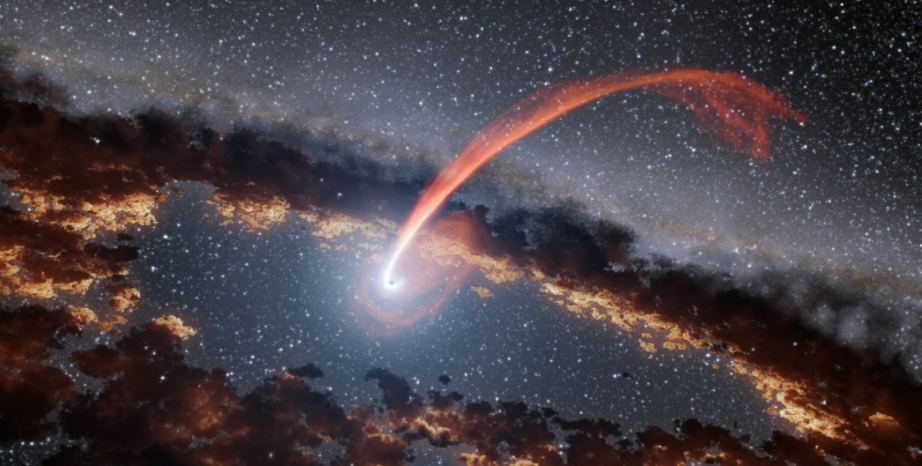
Eventually, the material settles down, and its light emissions quiet down, too. It took about 100 days for the star to be torn apart, for the material to heat up, and then to cool down. The Zwicky Transient Facility (ZTF) was the first to spot the TDE on March 1st, 2021. Then NASA’s Swift Observatory and Neutron star Interior Composition Explorer (NICER) telescope performed their own observations. Each of them is more sensitive to different wavelengths of light, and when they work together, they give more complete pictures of complex astrophysical events like TDEs.
But after the initial period of heating up and then cooling down, something unexpected happened.
About 300 days after ZTF first spotted the black hole destroying the star, NASA’s NuSTAR performed its own observations. NuSTAR found the hot corona, but scientists were surprised when there were no jets. Coronae usually appear with relativistic jets coming from opposite sides of a black hole.
“We’ve never seen a tidal disruption event with X-ray emission like this without a jet present, and that’s really spectacular because it means we can potentially disentangle what causes jets and what causes coronae,” said lead author Yuhan Yao. “Our observations of AT2021ehb are in agreement with the idea that magnetic fields have something to do with how the corona forms, and we want to know what’s causing that magnetic field to get so strong.”
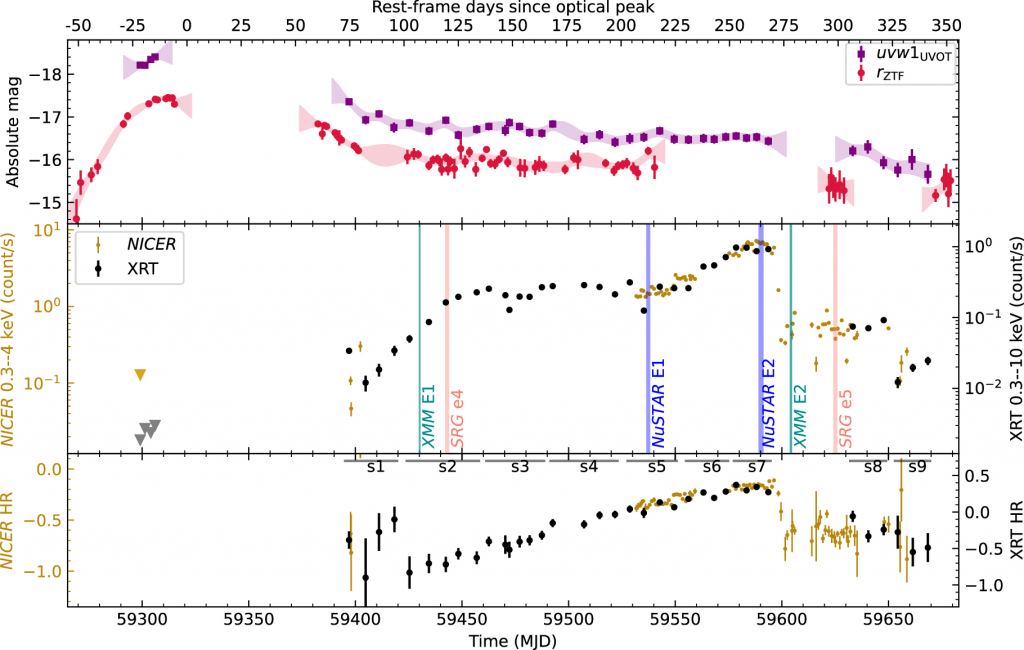
AT2021ehb is different from other observed TDEs. It’s brighter than any other non-jetted TDE. The brightness peaked at 30 keV, which is 300 million degrees. Its brightness allowed the researchers to “… obtain a series of high-quality X-ray spectra, including the first hard X-ray spectrum of a non-jetted TDE up to 30 keV,” the authors write in their paper.
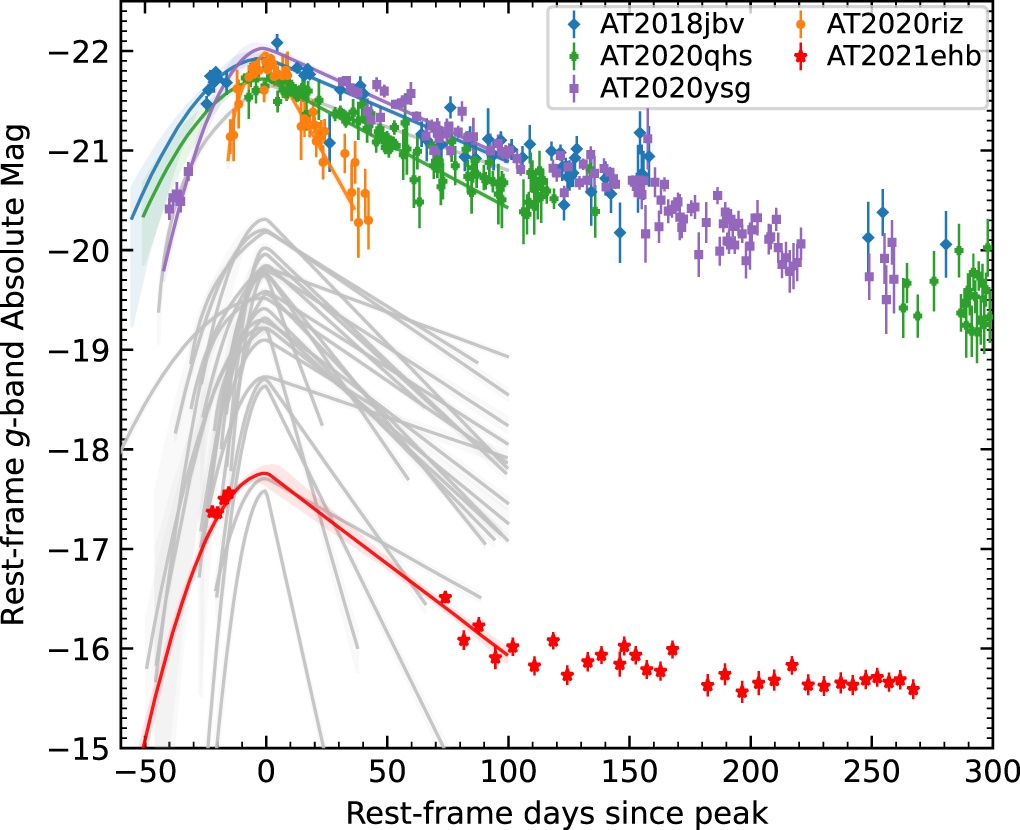
The intricate behaviour of light across the spectrum paints the picture of what’s going on in these complex events. This study ties TDEs to the formation of a black hole’s corona and then, eventually, its jets. But it’s only one TDE, and astrophysicists need more observations of TDEs to build their understanding of the relationships between all three.
Lead author Yao is leading an effort to find more TDEs. Only more data from telescopes like NuSTAR and others can strengthen our understanding of black holes, TDEs, coronae, and jets.
“We want to find as many as we can,” Yao said.
More:
- Press Release: NASA Gets Unusually Close Glimpse of Black Hole Snacking on Star
- New Study: The Tidal Disruption Event AT2021ehb: Evidence of Relativistic Disk Reflection and Rapid Evolution of the Disk–Corona System
- Universe Today: A Black Hole Consumed a Star and Released the Light of a Trillion Suns

